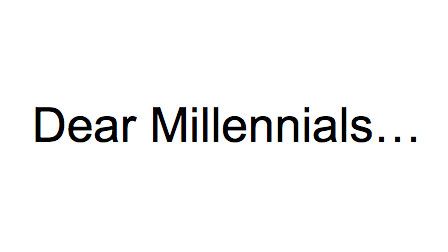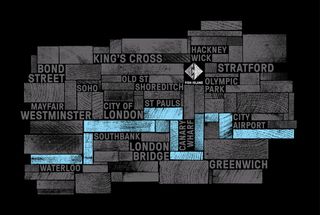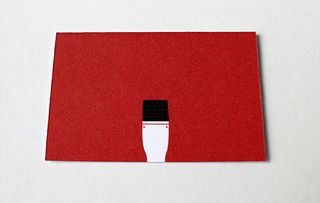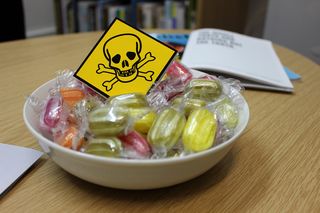How design studios can win the best creative talent
Plus: how not to attract creatives with your ads.

Finding the right person for the job can be a long and difficult process. This is especially true when it comes to the creative industries.
After all, how do you know a new hire has the skills, knowledge and character traits you need both now – and in the future? How can you make sure you attract the best of the best for a new position? And are there any bigger industry issues to consider?
To find out how agencies sniff out the top talent – and what key considerations they make before hiring – we've spoken to creative directors on the hunt for new staff...
One excellent example of how not to attract talent made headlines earlier this year when the Tea House Theatre posted an acerbic job advertisement aimed at young people.
Opening with a barbed and misspelled "Dear Millenials", the advert quickly did the rounds on the internet thanks to its unnecessary attacks on graduates and a general tone of frustration. Check out the full ad below:
![The unfortunate ad in all its glory [click the icon to enlarge]](https://cdn.mos.cms.futurecdn.net/yN5QMvJFSNCV4HUrKNuCcL-320-80.jpg)
Although it makes for a humorous read, the advertisement also poses a serious question: if this isn't how an arts company should recruit talent, how should they do it?
Death of the traditional ad

For Tom Rogers, a creative director at Jack Renwick Studios, adverts have never been a way to reach out to graduate talent. "I just don’t think it’d ever be how we want to find talent," he explains. "The real talent – that needle in a haystack; that unpolished diamond – is worth hunting out."
Get the Creative Bloq Newsletter
Daily design news, reviews, how-tos and more, as picked by the editors.
Meanwhile the team at Taxi Studio take a digital-first approach, which thankfully doesn't make the same mistakes as Tea House Theatre, as the head of student recruitment, Sam Edwards, reveals.
"We mainly advertise on our website and Twitter, as well as directly emailing lecturers to put a shout out for us when we have a role or placements coming up," says Edwards. "We work hard to maintain good relationships with universities – that's key to us growing our reputation amongst their students."
With all the issues facing our industry, it can’t continue to recruit the way it does
Craig Oldham
As for designer and creative consultant Craig Oldham, it's the industry – not the designers and graduates – that needs to be given a reality check and a kick up the backside.
"I've always held a bit of an adage: bravery is rarer than talent," he says. "And these are words ringing in my ears when thinking about the general recruitment strategies kicking around in the industry."
He points out that while initiatives like D&AD New Blood and New Blood Shift are an important step in the right direction, the industry is generally quite lazy when it comes to going out and hunting down new talent.
"With all the problems and issues that are facing our industry, it can’t continue to recruit the way it does. And I don’t just mean the beige job ad that perpetually reads like a copy and paste job, the glaring hypocrisy in being the most uncreative way to ask for creativity, nor that elusive creature known through legend as 'minimum one year experience'.
"No. The biggest issue facing recruitment into the industry is vanity, our industry’s favourite sin. We hire what we know and what we like and what we are comfortable with. We hire people like ourselves when we should be hiring people whom are the opposite, who think and do differently, who have a different background, a different upbringing, and different ideas."
Seeking out talent

If creative directors want to hire people from outside their comfort zone, they need to start networking more efficiently and keep an ear to the ground for talented up-and-coming designers who haven't yet landed their first gig. It's just a case of knowing where to look.
"Generally speaking, there isn’t any better way than good, old-fashioned word of mouth," says Rogers. "It’s why we’ve all kept close relationships with our courses, old tutors and friends in industry – what better way than discovering a talented student than by hearing them from people you trust and respect. These relationships make seeking out the right stands at New Blood or the best grad shows in town easier to find and discover the talent in the room."
Visiting students at their universities to do talks and portfolio reviews is the best way to find people
Sam Edwards
Hitting the road and visiting students on campuses is also a good way to unearth the latest wave of design talent. "We find getting out there and visiting students at their universities to do talks and portfolio reviews is the best way to find people, as well as one-day briefs to see how they work, or setting studio briefs with the offer of placements," says Edwards.
So important are students to Taxi's internal culture, the studio runs its placement calendar all year round. "Grad shows, if local to us, are really great," he adds.
"New Blood is a fantastic show but not so great to spot talent as it’s pretty hectic! Events like the Falmouth Vaults evening, where agencies get to see WIP portfolios and just chat to students, are really useful, and give a chance to actually get to know people before thinking about inviting them for interview."
Get your studio out there

Meeting and greeting is all well and good, but for creative directors and agencies to attract the maximum amount of graduate talent possible, they need designers to be drawn to them. So what makes a designer hunt down a specific agency? Rogers has a few ideas about how some groundwork can pay off in the long term.
"Well, it’s not our website that makes them want to come to us – so I think it must be down to us getting our name out there for people to see," he reveals. "Whether that's in the design industry press or professional awards. Or just as importantly, by visiting courses up and down the country and trying to inspire soon-to-be graduates through talks, crits, setting briefs and judging student awards.
"Like most things in life – the more you put in, the more you get out. The earlier in their journey that you reach out and engage with them, the more likely graduates are to remember you when everyone else is knocking on their door."
If you’re looking for your first job, you want to know you’ll be looked after, develop your skills and have fun
Sam Edwards
Edwards agrees that an established reputation is a crucial way for an agency to reap the best talent, but adds that culture is playing an increasingly big part in what budding designers are looking for in a career.
"If you’re looking for your first job, you want to know you’ll be looked after, develop your skills and have fun," he says.
"Students are eager to take on briefs set by agencies as it can be a part of their portfolio as well as an opportunity to show off their skills and this works well for us. When we set a Microbrewery brief a few years ago, we had over 70 applicants and many used it in their folio, including a young designer who we subsequently hired.
"We pride ourself on being open and accessible and when students contact us asking general advice, we always try to help and we always provide constructive feedback for any unsuccessful applicants."
Only hire people different to you

We've seen that hitting the road and spreading the word about your agency can have a positive effect, but Oldham is keen to point out that these approaches don't necessarily fix an underlying problem that affects the whole of the design industry.
Diversity in every sense is an active problem in our industry
Craig Oldham
"I think it was Tibor Kalman who said to only hire people better than you," says Oldham. "Well I’d add to that, 'different to you'. Diversity in every sense – but especially gender, social and economic class, and ethnicity – is an active problem in our industry and therefore all of our studios, agencies, and businesses. We have to act to change it, and it needs changing."
"Creativity needs diversity to thrive, to be original, and so does our industry. So next time you’re hiring, think about how you can bring a fresh perspective and voice into the studio or business, and not just one that sounds familiar, cut and paste, uncreative… like all those job ads."
Related articles:

Thank you for reading 5 articles this month* Join now for unlimited access
Enjoy your first month for just £1 / $1 / €1
*Read 5 free articles per month without a subscription

Join now for unlimited access
Try first month for just £1 / $1 / €1

Dom Carter is a freelance writer who specialises in art and design. Formerly a staff writer for Creative Bloq, his work has also appeared on Creative Boom and in the pages of ImagineFX, Computer Arts, 3D World, and .net. He has been a D&AD New Blood judge, and has a particular interest in picture books.